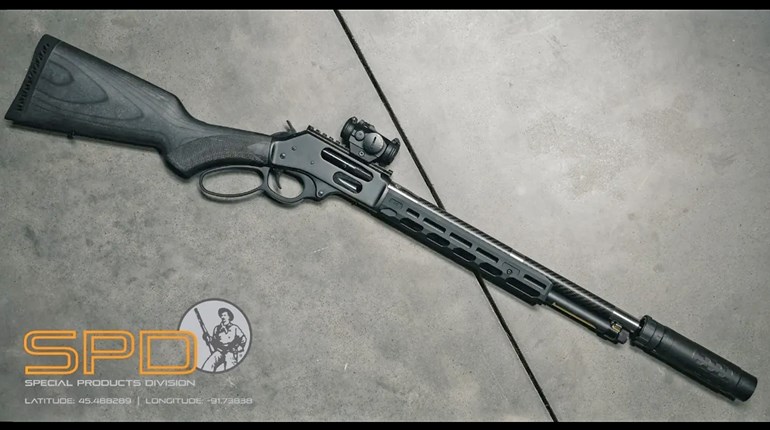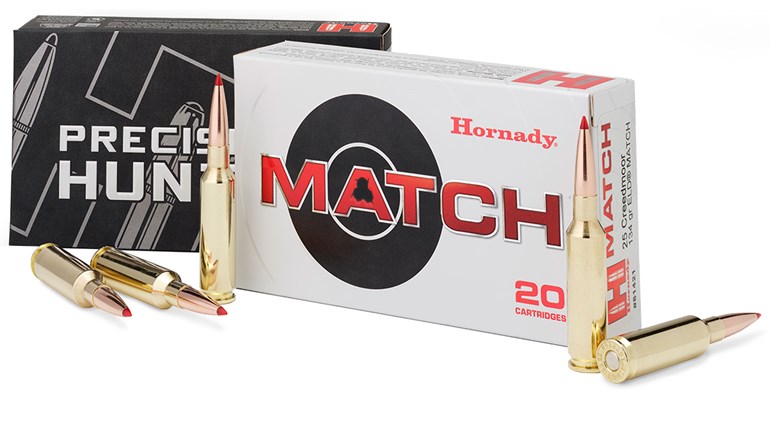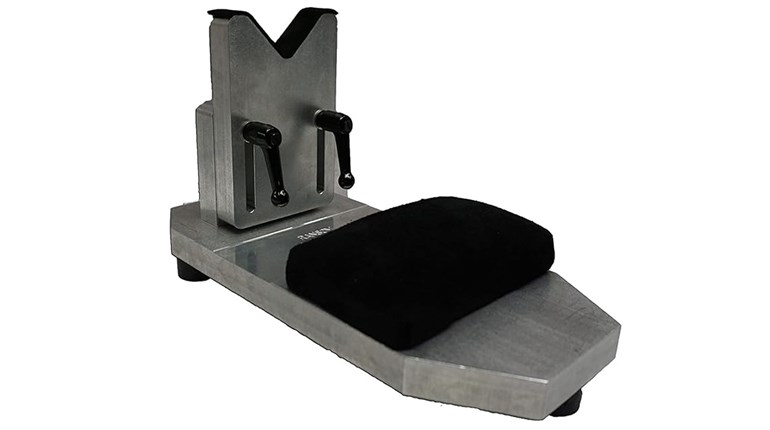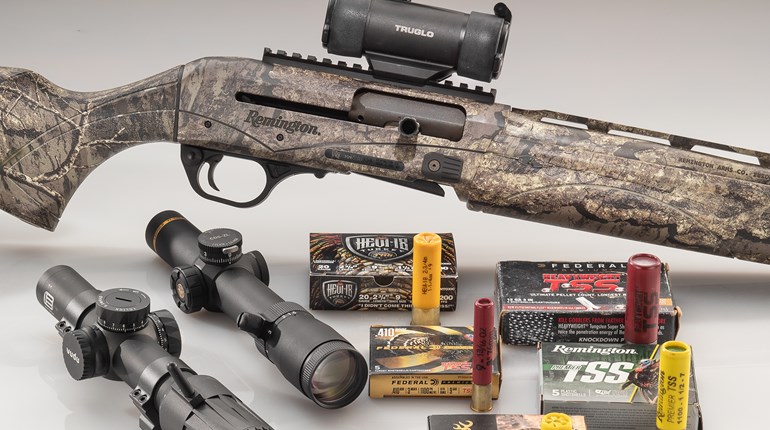
Conceptually, a pistol-caliber carbine should be an easy-to-handle, low-recoiling long gun that fires ammunition usually reserved for handguns. One of the most famous dates back to 1873, when Winchester introduced a lever-action carbine chambered for a variety of cartridges that could also be fired in the Colt Peacemaker. It gave cowboys, ranch hands and road agents two guns that used the same ammunition. Another illustrious example was the Tommy Gun immortalized by lawmen and gangsters in the 1920s and '30s. This heavy-but-controllable submachine gun could lay down a barrage of .45-caliber bullets and shared ammo with the 1911.
A 16-inch carbine barrel—which is the minimum legal length except for registered, short-barreled rifles—drastically increases the muzzle velocity of pistol cartridges. This added velocity, combined with the advantages of a shoulder-fired platform and the resulting longer sight radius, make pistol-caliber carbines easier to hit targets at longer ranges than any handgun.
But there is more to it than just hitting the target. Bullets are designed to behave within a certain velocity envelope. Drive them too fast, and they come apart or over-expand when they hit things. Fragmenting pistol bullets, especially when driven at carbine velocities, can fail to defeat intermediate barriers. They may leave wicked-looking wounds, but those wounds could be too shallow for fast, fight-ending incapacitation.
On the other hand, a bullet that fails to expand (and sometimes even those that over-expand) can penetrate very deeply, possibly deep enough to pass completely through a bad guy and strike an innocent bystander. Penetration potential is also a concern when shooting inside dwellings. You don't want to miss the bad guy and shoot through a wall into your child's room or the coffeehouse next door.
On average, a 16-inch-barreled carbine will give a velocity increase of about 230 fps over that produced from a 4- or 5-inch-barreled pistol. This equates to about 20 fps per inch of barrel. Increasing a pistol bullet's impact velocity by 230 fps, about 20 percent, will affect the bullet's terminal performance. How much so depends on bullet design.

To find out, I tested seven different loads in three calibers from handguns and pistol-caliber carbines. Bullets were fired into 10-percent ordnance gelatin from a distance of 10 feet. The results tell us several things. They give us an idea of how these bullets perform at near point-blank range out of a carbine as compared to a pistol. By looking at the results from the pistols, we can see how the bullets will perform from a carbine at greater distances when they slow to handgun velocities.
With terminal performance, there are two main areas of concern: penetration depth and wound cavity size. A mix of standard, jacketed hollow-points and bonded hollow-points were included in the test along with one specialty round. In all cases, the wound cavities created by the bullets fired from the carbines were much wider. This is the effect of higher impact velocity. With all but one of the bullets, those fired from the carbines also penetrated more deeply. In general, you can expect more penetration with pistol-caliber carbines.
Of the bullets tested, the lone exception to this rule of thumb was Cor-Bon's 165-grain .45 ACP +P load fired from the Heckler & Koch USC. This is one of my favorite handgun loads because of the massive tissue destruction it delivers, combined with a moderate 10 inches of penetration in ordnance gelatin. Out of the carbine, this load mangled the first 4 inches inside the gelatin block, and the bullet disintegrated. The deepest a piece of the bulletI was able to locate penetrated 5.75 inches.
If you're thinking of choosing a pistol-caliber carbine as opposed to a carbine in 5.56 NATO because you believe it will eliminate over-penetration concerns, you're making a mistake unless you carefully select and test your loads. Most frangible or varmint-type .223 Rem. ammunition actually penetrates less in ordnance gelatin than most of the handgun loads I tested here. Hornady's 40-grain .223 Rem. TAP Urban load only penetrated 7 inches in the gelatin, and the 110-grain .308 Win. TAP Urban load only penetrated 9 inches.

But, aren't pistol-caliber carbines supposed to be easier to shoot? A 6.5-pound carbine chambered in 5.56 NATO generates about 3.7 foot-pounds of recoil energy. A carbine of the same weight, firing a 115-grain, 9 mm load produces less than half that recoil, while one in .40 S&W generates only about two-thirds the recoil of a 5.56 NATO carbine. Pistol-caliber carbines should be easier to control, especially during rapid fire, because they allow you to recover and obtain a new sight picture sooner. However, a .45 ACP carbine generates 35 percent more recoil than one of an equivalent weight in 5.56 NATO.
To sort this out in a practical manner, two other shooters and I tested three pistol-caliber carbines in 9 mm, .40 S&W and .45 ACP. We ran each of these and a similar carbine in 5.56 NATO through a series of drills at 7 and 25 yards, and all shooting was conducted with open sights. At 7 yards, the fastest average times were obtained with the 9 mm carbine and the slowest came with the .45 ACP carbine. Time wise, the .40 S&W (tested in the EMF JR Carbine) and 5.56 NATO carbines were right in the middle. The difference in the slowest and fastest times was only .5 second.
At 25 yards the average times for all three shooters with all four carbines were virtually identical, meaning the minute difference in recoil had no bearing on the ability to trigger fast and accurate follow-up shots at that range. Surprisingly, at 7 yards the shooters were as accurate and as fast with handguns as they were with the carbines. The carbine's advantage over the handgun became apparent only as the range increased. At 25 yards the carbines proved to be 30 percent faster and 20 percent more accurate. There was no contest between the handguns and the carbines at greater distances; however, the pistol-caliber carbines were only half as accurate as the 5.56 NATO carbine at 75 and 100 yards.
At just shy of 75 yards, a bullet fired from a pistol-caliber carbine will hit with the same velocity as a handgun chambered for the same cartridge at about 3 yards. For a home-defense carbine to complement your handgun, one in a pistol caliber seems to make sense because you can share ammunition and extend your effective range. A greater effective range is a good thing, but just how important is the ability to share ammunition between your pistol and carbine?
For home protection, it's not that big of a deal. You shouldn't have to carry ammo farther than from the basement to the bedroom. On the other hand, if you are hoarding ammunition for an impending zombie attack, you only have to worry about stockpiling one cartridge. You can always manipulate terminal performance by bullet selection. If you're heading out into some apocalyptic disaster, you would only need to carry a single type of ammo, but what happens when that becomes the cartridge you cannot find? For surviving bad situations away from home in the wickedness a world like that might present, I believe selecting a cartridge with the ability to reach past 100 yards would be very desirable.

A pistol-caliber carbine does offer increased accuracy and range over a handgun, but it's still a short-range weapon. Velocity at 100 yards will be below the point most handgun bullets will effectively expand, so for all practical purposes they become FMJ rounds. Beyond 100 yards, a pistol-caliber carbine simply cannot compete with a 5.56 NATO carbine in terms of trajectory, accuracy or wounding capability.
Don't mistakenly assume that because a carbine shoots a pistol cartridge it will be easier to control or that it will be safer to shoot in your apartment complex than a rifle-caliber carbine. You'll also find that accessories and extra magazines are not as available as they are for AR-style, rifle-caliber carbines.
Where a pistol-caliber carbine does have a distinct advantage is as a select-fire platform, configured as a short-barreled rifle and used with a suppressor and subsonic ammunition. It's not an uncommon weapon for tactical teams, but as cool as a carbine like this may be, they are expensive and require a lot of paperwork to obtain, assuming they are legal in your state.
There's no doubt pistol-caliber carbines are fun to shoot, but are they the right choice for survival or home protection? For some, maybe so. An M4-style carbine in 5.56 NATO on the other hand, is infinitely more versatile in terms of ammunition and accessories than any pistol-caliber carbine. It will also work just as well at short and long range, inside and outside your home.
With the versatility of an M4-style carbine in 5.56 NATO a given, it still may not be as cool as some pistol-caliber carbines. For fighting bad guys at rock-throwing ranges, it may be no better. A gun's cool factor will not save your life, but nevertheless, a cool, pistol-caliber carbine loaded with the right ammo should work just fine. They are indeed more accurate and easier to shoot than any handgun.
Terminal Performance Comparison
| Load | Gun | MV (fps) | EXP (inches) | RW (grains) | PEN (inches) |
| 9 mm 124-grain Speer Gold Dot | Pistol | 1,182 (50) | .71 | 124 | 13.25 |
| 9 mm 124-grain Speer Gold Dot | Carbine | 1,352 | .45 | 107 | 17.50 |
| 9 mm Federal 115-grain JHP | Pistol | 1,117 (59) | .57 | 114 | 14.50 |
| 9 mm Federal 115-grain JHP | Carbine | 1,318 | .50 | 70 | 16.00 |
| .40 S&W 155-grain Speer Gold Dot | Pistol | 1,222 (58) | .72 | 155 | 14.00 |
| .40 S&W 155-grain Speer Gold Dot | Carbine | 1,458 | .75 | 140 | 14.50 |
| .40 S&W 155-grain Winchester SilverTip | Pistol | 1,209 (84) | .76 | 155 | 10.25 |
| .40 S&W 155-grain Winchester SilverTip | Carbine | 1,459 | .82 | 145 | 12.75 |
| .45 ACP 185-grain Speer Gold Dot | Pistol | 1,080 (59) | .72 | 185 | 14.00 |
| .45 ACP 185-grain Speer Gold Dot | Carbine | 1,279 | .68 | 160 | 14.75 |
| .45 ACP 165-grain Cor-Bon +P JHP | Pistol | 1,264 (89) | .78 | 68 | 10.25 |
| .45 ACP 165-grain Cor-Bon +P JHP | Carbine | 1,633 | NA | NA | 5.75 |
| .45 ACP 145-grain Glaser Silver Safety Slug | Pistol | 1,362 (41) | NA | NA | 7.00 |
| .45 ACP 145-grain Glaser Silver Safety Slug | Carbine | 1,617 | NA | NA | 8.00 |





































